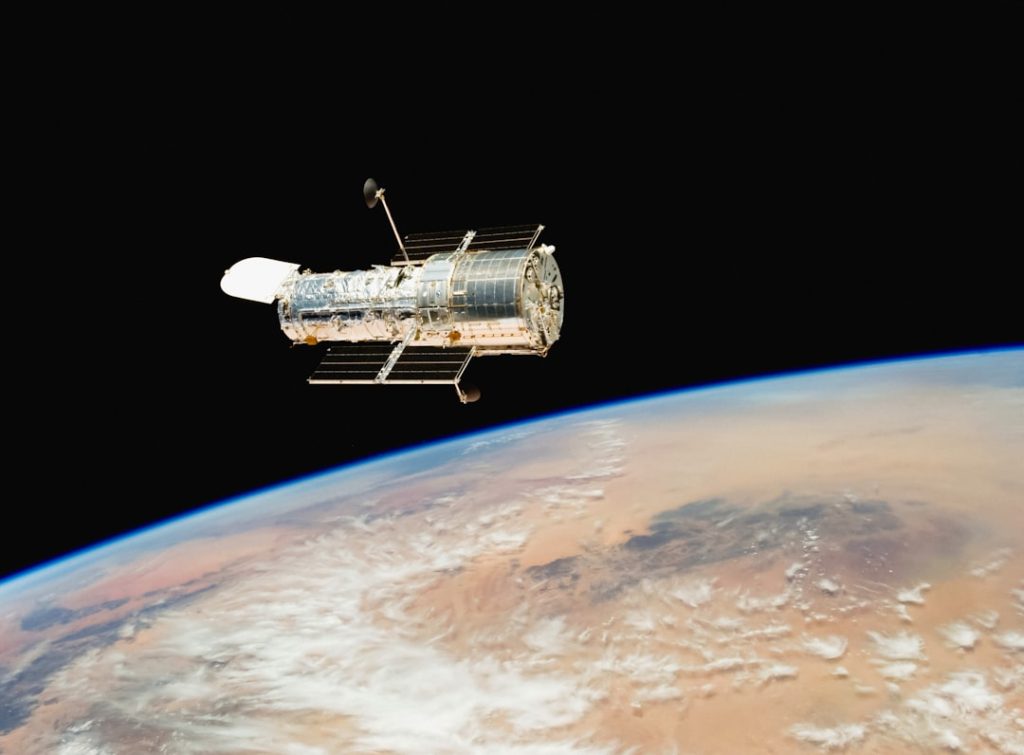Skylab, the United States’ first space station, marked a significant milestone in human space exploration. Launched on May 14, 1973, Skylab was not merely a technological achievement; it represented a bold step into the realm of long-duration human spaceflight. The station was designed to serve as a laboratory for scientific research and a platform for studying the effects of microgravity on the human body.
Skylab’s inception was rooted in the lessons learned from earlier missions, particularly the Apollo program, which had successfully sent astronauts to the Moon. The transition from lunar exploration to establishing a permanent presence in low Earth orbit was a natural progression in NASA’s ambitious agenda. The design and construction of Skylab were driven by the desire to conduct extensive scientific research in an environment that could not be replicated on Earth.
The station was equipped with various instruments and facilities to support a wide range of experiments, from solar observations to biological studies. Skylab’s mission was not only to advance scientific knowledge but also to pave the way for future space stations and long-term human habitation in space. As such, it holds a unique place in the history of space exploration, serving as a precursor to more advanced orbital platforms like the International Space Station (ISS).
Key Takeaways
- Skylab was the United States’ first space station, launched in 1973 and operated until 1979.
- Skylab was constructed from the third stage of a Saturn V rocket and was the largest space station of its time.
- Skylab facilitated over 270 scientific experiments, including studies on solar activity, Earth observations, and biomedical research.
- Astronauts lived and worked on Skylab for extended periods, conducting experiments and adapting to life in microgravity.
- Skylab’s re-entry in 1979 sparked international attention and its legacy continues to influence future space stations and NASA’s space exploration efforts.
The Launch and Construction of Skylab
The launch of Skylab was a complex endeavor that required meticulous planning and execution. It was launched aboard a modified Saturn V rocket, the same type that had propelled astronauts to the Moon during the Apollo missions. The launch took place from Kennedy Space Center in Florida, and the mission was initially met with great enthusiasm.
However, shortly after reaching orbit, Skylab encountered significant challenges. The station’s protective sunshield had been damaged during launch, leading to overheating of its internal systems. This unforeseen issue necessitated immediate action from NASA engineers and scientists.
To address the overheating problem, a series of innovative solutions were devised. Astronauts aboard the first crewed mission, Skylab 2, were tasked with deploying a makeshift sunshade using materials available on board. This improvised solution successfully reduced the internal temperature of Skylab, allowing it to function as intended.
The construction of Skylab itself was an engineering marvel; it consisted of multiple interconnected modules that housed laboratories, living quarters, and observation decks. The station’s design allowed for modular expansion and adaptability, which would later influence the design of future space habitats.
Scientific Experiments and Discoveries on Skylab

Skylab served as a unique platform for conducting scientific experiments that would have been impossible on Earth. Over its operational period, three crewed missions were launched to Skylab, each lasting several weeks and involving extensive research across various disciplines. One of the primary focuses was solar observation; Skylab was equipped with sophisticated instruments designed to study solar phenomena such as solar flares and coronal mass ejections.
These observations provided invaluable data that enhanced our understanding of solar activity and its impact on Earth’s atmosphere. In addition to solar studies, Skylab facilitated groundbreaking research in human physiology. Scientists were particularly interested in how prolonged exposure to microgravity affected the human body.
Astronauts conducted experiments measuring changes in muscle mass, bone density, and cardiovascular function. One notable experiment involved monitoring the effects of microgravity on vision; researchers discovered that some astronauts experienced changes in their eyesight due to fluid shifts in the body while in orbit. These findings have had lasting implications for future long-duration space missions, including those planned for Mars exploration.
Living and Working in Space: Life on Skylab
| Aspect | Metric |
|---|---|
| Duration of Skylab missions | 28, 59, and 84 days |
| Number of Skylab missions | 3 |
| Number of astronauts on Skylab | 9 |
| Experiments conducted | 270 |
| Spacewalks | 3 |
Life aboard Skylab presented both challenges and unique experiences for its crew members. Astronauts had to adapt to living in a confined space with limited resources while maintaining their physical and mental well-being. The station was equipped with basic amenities such as sleeping quarters, a galley for food preparation, and exercise equipment to counteract the effects of microgravity on their bodies.
The importance of exercise was underscored by research indicating that astronauts could lose significant muscle mass and bone density without regular physical activity. Daily routines aboard Skylab were structured yet flexible, allowing astronauts to balance work with leisure activities. Crew members engaged in scientific experiments during designated work hours but also found time for relaxation and recreation.
They could observe Earth from the station’s windows or engage in hobbies such as photography and reading. The camaraderie among crew members played a crucial role in maintaining morale during their extended missions. The experience of living in space fostered a sense of unity and purpose among astronauts, who were acutely aware that they were part of a historic endeavor.
Skylab’s Re-entry and Legacy
After nearly six years in orbit, Skylab’s operational life came to an end in 1979 when it re-entered Earth’s atmosphere. The re-entry was not without drama; predictions about where debris might land created public concern. Ultimately, pieces of Skylab fell over the Indian Ocean and sparsely populated areas of Western Australia, sparing major urban centers from potential disaster.
The event highlighted the challenges associated with decommissioning space stations and raised questions about space debris management—a topic that remains relevant today. Despite its relatively short operational period, Skylab left an indelible mark on space exploration. It demonstrated that humans could live and work effectively in space for extended periods, laying the groundwork for future missions aboard larger and more sophisticated platforms like the ISS.
The scientific data collected during Skylab’s missions continues to inform research today, influencing fields ranging from astrophysics to medicine.
Skylab’s Impact on Future Space Stations

The legacy of Skylab extends beyond its immediate contributions; it set important precedents for future space stations. The design principles established during Skylab’s construction informed subsequent projects, including Mir and the International Space Station (ISS). For instance, Skylab’s modular design allowed for flexibility in accommodating various scientific instruments and living quarters—a concept that has been further refined in later space habitats.
Moreover, the operational experiences gained from Skylab’s missions provided critical insights into crew health management during long-duration flights. NASA learned valuable lessons about nutrition, exercise regimens, and psychological support systems necessary for maintaining astronaut well-being in isolated environments. These lessons have been instrumental in shaping protocols for current and future missions involving extended stays in space.
Skylab’s Influence on NASA’s Space Exploration
Skylab played a pivotal role in shaping NASA’s approach to human space exploration beyond low Earth orbit. The success of its missions demonstrated that humans could conduct meaningful scientific research in space over extended periods, bolstering support for future endeavors such as the Space Shuttle program and eventual plans for Mars exploration. The data collected from Skylab’s experiments laid the groundwork for understanding how humans adapt to microgravity—a critical consideration for long-duration missions beyond Earth’s orbit.
Furthermore, Skylab’s legacy influenced international collaboration in space exploration. The cooperative spirit fostered by joint missions aboard Skylab contributed to subsequent partnerships between nations in developing shared goals for human spaceflight. This collaborative ethos ultimately culminated in the establishment of the ISS, where multiple countries work together to advance scientific knowledge and explore new frontiers.
Skylab’s Contributions to Space Exploration
Skylab stands as a testament to human ingenuity and determination in exploring the cosmos. Its successful launch, operation, and eventual re-entry marked significant milestones in NASA’s history and laid essential groundwork for future endeavors in space exploration. The scientific discoveries made aboard Skylab continue to resonate within various fields today, influencing our understanding of both space phenomena and human health.
The lessons learned from Skylab have shaped not only NASA’s approach but also global perspectives on human spaceflight. As we look toward future missions aimed at Mars and beyond, the pioneering spirit embodied by Skylab serves as an enduring reminder of what humanity can achieve when we dare to reach for the stars.


